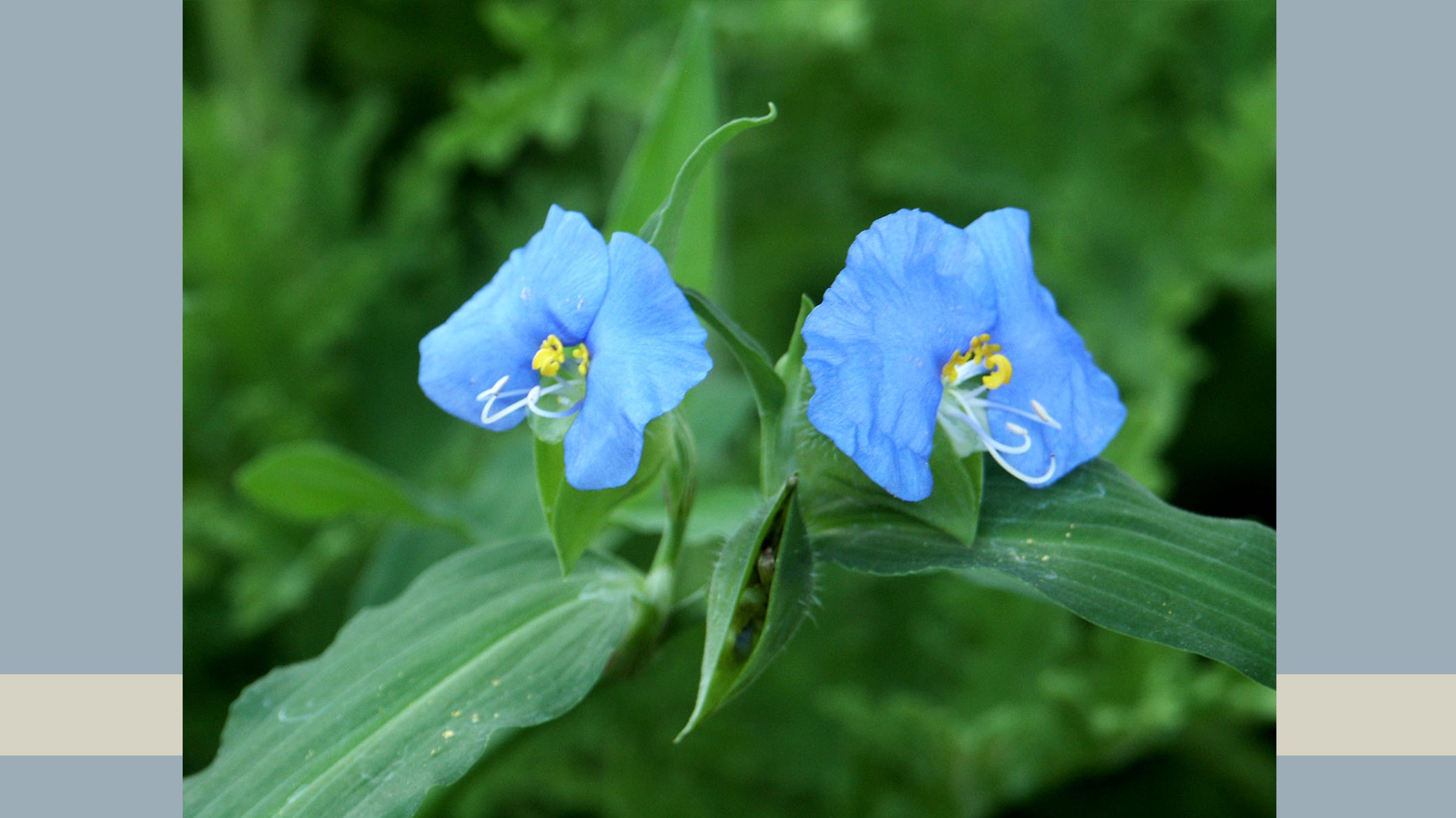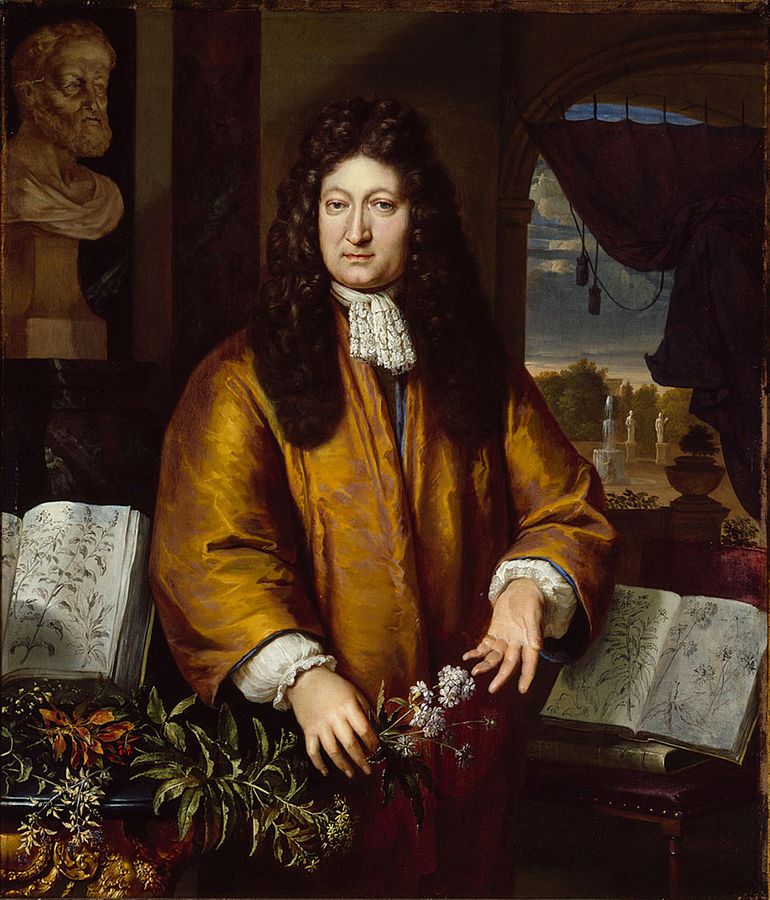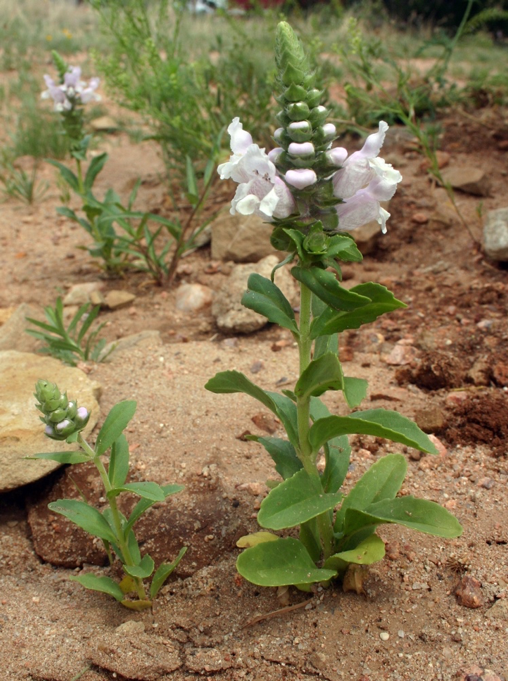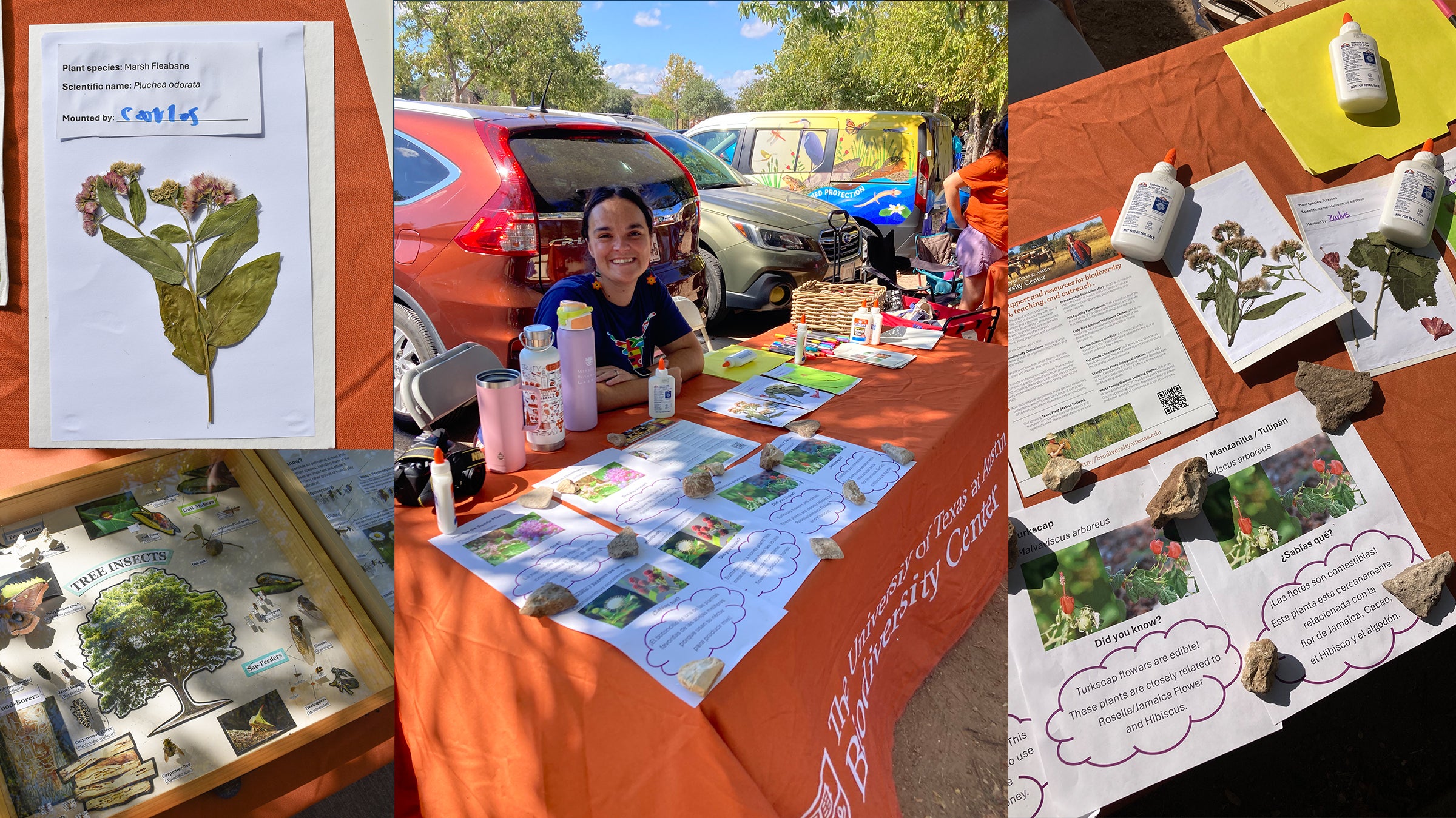
Commelina erecta flower. The genus name Commelina honors the three Commelin brothers. The specific name erecta refers to the erect form of the plant. Photo by Assaf Shtilman - (CC BY-SA 3.0)
Ever wonder how species get their scientific names? The scientist who describes a new species selects the name. As long as the name follows a few basic rules, and is unique, as in no other species share the same name, there are few restrictions in the names that scientist can select. Most names are descriptive (say something about what the species looks like), refer to where the species was discovered or where it occurs, or are meant to honor a person or group of people.
The stories behind the scientific names of many species are often fascinating, and sometimes humorous. The pretty little Slender Dayflower (Commelina erecta) has a wide native range, including the Americas, Africa, and western Asia. The genus Commelina was named in honor of two (or possibly three, depending on which account you read) members of the Dutch family Commelin.
Jan Commelin and his nephew Caspar Commelin were well-known botanists. Carl Linnaeus (1707-1778), a botanist, physician, and zoologist, knew both men. He named the genus Commelina in recognition of their botanical accomplishments, with the two showy blue petals of the flower representing the two famous Commelin botanists. However, many botanists insist that Linnaeus actually intended this as a joke, and in reality named the genus for three members of the family Commelin, rather than just these two.
In this version of the story, the three petals of Commelina represent the three members of the Commelin family: the two bright blue, showy, significant petals for the two accomplished botanists, and the little colorless insignificant petal (just visible below the two showy ones) for Jan’s brother Casparus, who was “merely” a bookseller and newspaper publisher, and who never accomplished much of anything in botany. If true, sometimes being “honored” by a name isn’t all it’s cracked up to be.
Often, the common name of a plant is more colorful than the scientific name. The spindly Skeletonplant has many stems and few greatly reduced leaves, and bears a delicate lavender flower. The scientific name of Skeletonplant is Lygodesmia texana. Lygodesmia comes from lygos, meaning flexible stem, and desme, meaning bundle. So the generic name translates to "a bundle of flexible stems," which is a reasonable description of this plant, since it is almost all stems and no leaves. The plant isn't much to look at until it flowers, and then it is beautiful. But before this time, the plant without flowers does indeed look like a plant’s skeleton, if they had them.

Jan Commelin, one of the two 'more accomplished' members of the Commelin family - by Gerard Hoet (1648-1733)
The Rose Gentian or Texas Star (Sabatia campestris) displays its sexual prowess throughout the spring in central Texas. The scientific name of this one is pretty straightforward: Sabatia is named after Liberato Sabbati, an Italian botanist who worked in Rome in the mid-1700's, and campestris means "of the Plains". But what is a "Gentian," and why is that the common name of this plant? It turns out that "gentian" is an ancient name for a small medicinal herb, supposedly named for Gentius, King of ancient Illyria, who discovered the medicinal properties of similar species. One can only imagine how surprised the King of ancient Illyria might have been to know that we would still honor his discovery in this way today.
One of our most abundant wildflowers in central Texas has common and scientific names that are almost identical: Drummond's Phlox, or Phlox drummondii. "Phlox" is the Greek name for a flower with no scent, but possessing a bright color. But who was Drummond, and why is this “his” phlox? It turns out to be a convoluted and interesting story. Thomas Drummond was a Scottish Botanist who made his fame exploring the botanical riches of North America in the early 1800s. In the spring of 1831 he set out on foot to explore the Alleghany Mountains, and continued on to St. Louis, where he fell ill. He had planned to join fur traders who were headed up the Mississippi River, but his illness delayed him until after they had left. So, he went downriver to New Orleans, and then made his way to Texas.
In Texas, Drummond was hit by cholera, but eventually he was able to make his way up the Brazos, Colorado and Guadalupe Rivers, where he spent the next two years collecting plants (and also birds, his other passion). But then things started heating up between the Anglo colonists and the Mexican government (Texas was still a part of Mexico at the time). Drummond realized that Texas was about to become a war zone, and he decided that it was no place for a Scotsman to be running around collecting flowers. So he headed back for Europe in 1835, but sadly, he never made it. He died in Cuba in early March of that year, as his illnesses finally did him in. But his plant specimens continued on to Europe, and were the basis for many species descriptions, many of which were named for Drummond. Drummond also sent back seeds of this Phlox, and soon this flower became quite the rage in the nurseries of Europe.

Llano Uplift Sandmint (Brazoria enquistii). Photo by David M. Hillis.
From the original samples collected in central Texas, the European nurseries established more than 200 strains of P. drummondii that differed in flower size, flower color, and plant growth form. You have undoubtedly seen the descendants of the seeds Drummond collected in flower gardens throughout the world.
When a new species is discovered, specimens of the new species are placed in a permanent biodiversity collection, and then biologists write a formal species description that presents the evidence for the new species, describes how it differs from other species, presents information that is known about the new species, and provides a formal name. The UT Biodiversity Center includes several world class biodiversity collections that contain the original “type specimens” (the specimens used in the original species description) of many species. Our largest collections are of plants, fishes, amphibians, reptiles, insects, and cave invertebrates.
An example of a fairly recently discovered flower that occurs in central Texas is the Llano Uplift Sandmint, Brazoria enquistii, which was formally described by Matt Turner in 2003. The species is limited to sands from degraded Valley Springs gneiss in small parts of Mason and Llano counties (the species was once found in adjacent Burnet County, but that population appears to be extinct). The species is considered rare, and it is certainly very limited in distribution, but it is blooming in some abundance in the right habitats this wet spring.
The name Brazoria refers to the Brazos River, since most of the other species of Brazoria are found in the Brazos River watershed. But unlike other species of this genus, Brazoria enquistii is limited to a small region in the Colorado River watershed. There is some justice to that, however, as the names of the Brazos River (or originally, Brazos de Dios, or Arms of God) and the Colorado River (Red River in Spanish) were switched sometime early in Texas history. The arms of the Colorado River (or the original Arms of God) cut through the Edwards Plateau, and are fed by its many springs. The original Colorado, now Brazos, River originates on the Rolling Plains, and brings its muddy red waters heavy with suspended soil from there to the Gulf of Mexico. The specific name enquistii is named in honor of Marshall Enquist, the author of a beautiful field guide to the wildflowers of the Texas Hill Country.



